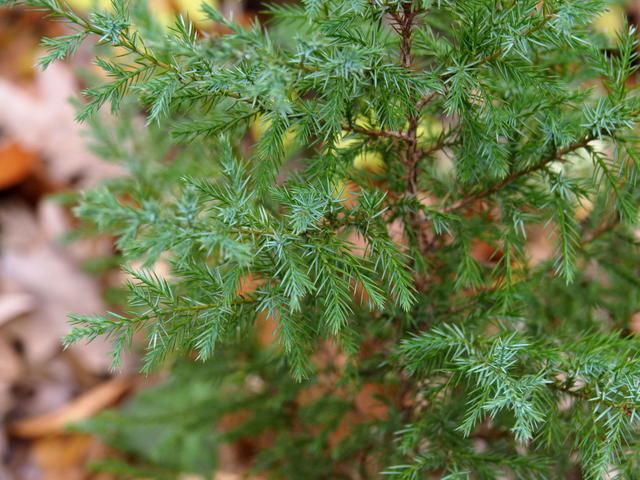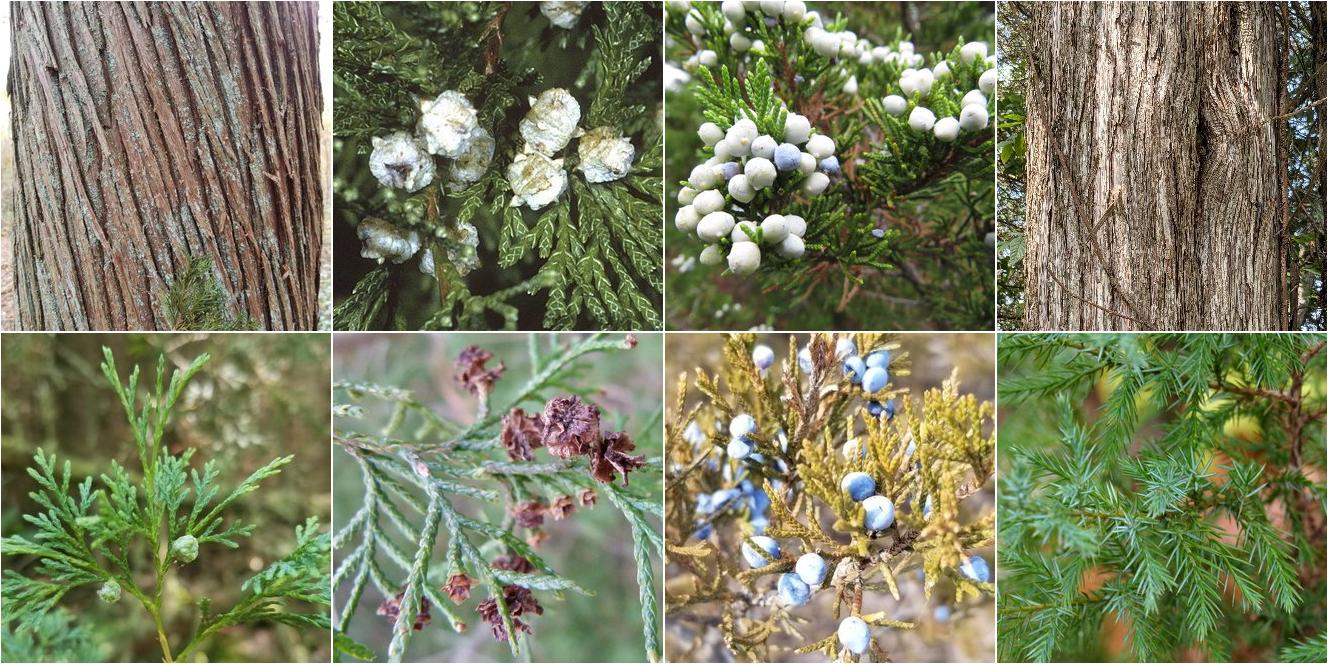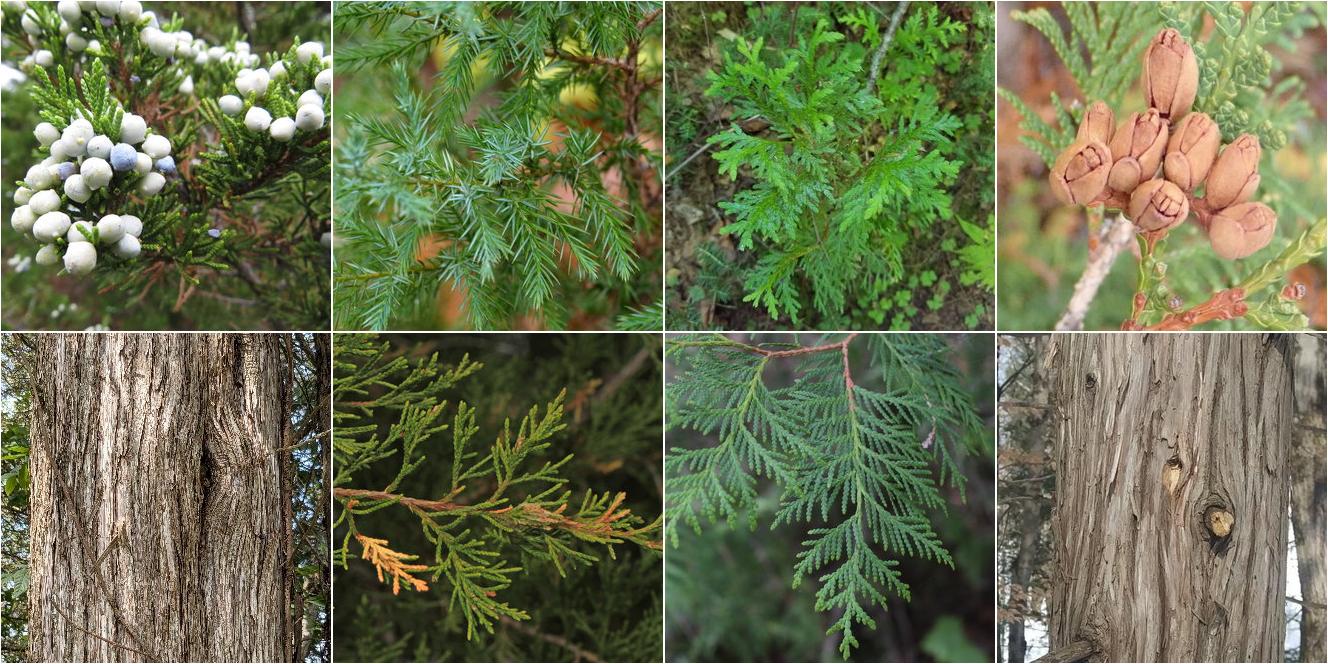Atlantic White Cedar (Chamaecyparis thyoides) vs. Eastern Redcedar (Juniperus virginiana)
Updated February 20th, 2024These two species are easily confused where their ranges overlap, especially on mature trees with scalelike foliage. They can be told apart easily by closely examining their seed cones, and by bark, shape, and foliage color. Although they can occur near each other, they have little habitat overlap by specific site. Redcedar is much more common and widely adaptable, and prefers drier sites. Atlantic white cedar is limited to acidic wetlands. Both are occasional in landscaping.





